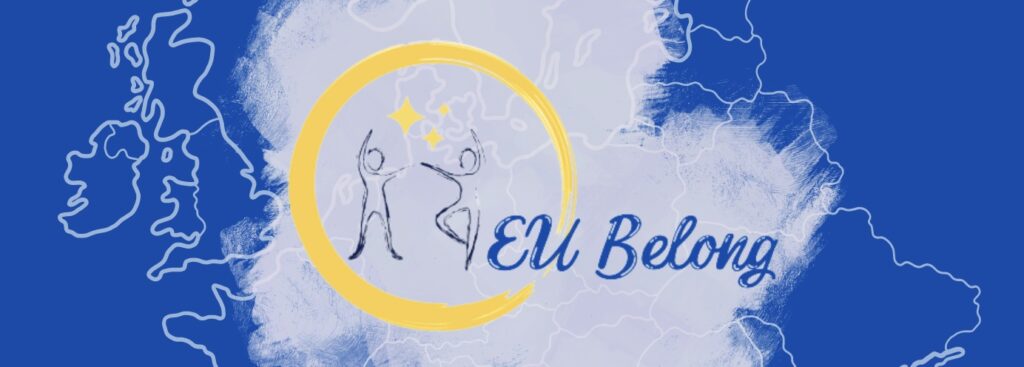The EU Asylum Migration and Integration Fund has selected the project PISTE – Participation in small and medium-sized towns: Experiences, Exchanges, Experiments among those to be financed for the period 2022-2023. The project aims to study and enhance integration policies within small European municipalities and it involves researchers from the Universities of Urbino, Erfurt and Antwerpen, activists from the Greek NGO Human Rights 360, and the municipalities of Bebra (Germany), Fermignano (Italy), Ninove (Belgium) and Voio (Greece).
Below, we present the English translation of the interview with the Project Coordinator from the University of Urbino, Eduardo Barberis, realised by Emanuela Braico and published in Italian by Uniamo Blogazine:
Professor Barberis, PISTE project took up the challenge and won EU AMIF funding. A significant success for your team.
Yes, actually the EU Asylum Migration and Integration tender, which is dedicated to integration policies, is a very competitive one and very difficult to win. It has received hundreds of applications and rewarded the PISTE project with a satisfying score of 91 points out of 100. This success is largely due to the work of a team that includes many members from Urbino University – among whom my colleague Alba Angelucci – who have participated in the drafting of the project and will contribute to all foreseen activities. The project came from the interest in complex social phenomena, which in our research group emerged for some years now. The idea of PISTE – acronym of Participation in small and medium-sized towns: Experiences, Exchanges, Experiments – is linked to the need of systematising through the exchange of experiences effective paths of inclusion for immigrants living in our small cities. Therefore, the focus of the project is on the specific characteristics and also the problems of foreign citizens in small European municipalities. This is necessary because, although several networks of cities for inclusion and even various handbooks for local integration policies exist, these models are almost exclusively tailored for big cities.
Which are partner institutions and the aims of this project?
The project encompasses two sets of objectives. There are core research objectives aiming to identify peculiarities of integration processes, criticisms and characteristics of inclusion within small European municipalities; and there are applied research objectives supporting these areas to guide them towards effective integration policies. The partnership of the project is mixed and includes the University of Antwerp in Belgium, Erfurt Applied Science University in Germany, small and medium municipalities of Fermignano in Italy, Ninove in Belgium, Bebra in Germany and Voio in Greece, and the Greek NGO Human Rights 360. Besides, we already worked with Antwerp and Erfurt on another European project, DIVERCITIES, which investigated the characteristics of integration within big European cities.
When did the project start and through which stages will it develop?
The project was launched on the 1st of February and it will continue for two years. The first six months will be mostly dedicated to the research on integration policies and small municipalities. We will discuss it together with immigrant associations, third-sector associations and local decision makers, by also comparing the different ongoing initiatives. It will be a research not for its own sake, but aimed to provide all information that will be useful in the moment of presentation and exchange of good practices. This is because obviously every country has its own normative framework and we need to consider under which conditions it is possible to learn from other experiences. The second group of activities deals with the “policy platforms” and the discussion about policies with the involvement of all interested parties and municipalities from different countries, in order to compare practices and potentially transfer in different contexts measures implemented by other partners. This stage also includes the redaction of a White Paper, a sort of handbook of good practices of integration tailored to small European municipalities. In the third and last part of the project, we will experiment with interventions and policy measures for immigrants’ inclusion in every involved municipality.
Therefore, the research will follow different lines of research.
The research will focus on specific interests of each municipality: in Belgium and Germany, it will take into account policies of participation in favour of resident immigrants, while in Fermignano it will be focused on information and desk services dedicated to third-country citizens, and in Greece on the reception system.
Which are the characteristics according to which the municipality of Fermignano have been selected as a case study?
Between our University and the Municipality of Fermignano there is a long-lasting cooperation on different topics and fields, including that of immigrant policies. Moreover, the project looks at territories that are at the centre of collaboration networks between municipalities, so as to have a general spill-over beyond the borders of individual communities. Therefore, the fact that Fermignano, together with Gradara, is the promoter and first signatory of the “Chart of Mayors on the social inclusion in the Euro-Mediterranean area”, which involved many other local authorities, has been crucial. I also wish to thank the mayor Emanuele Feduzi, the councillor Othmane Yassine, and the project manager Ilaria Vichi for their effective contribution to the participation of Fermignano in the project.
I conclude by asking you for an overview of the foreseen outcome.
A first effect certainly concerns the possibility to implement and improve integration measures for third-country citizens within the receiving territories. There will be the possibility to experiment initiatives and good practices through the dialogue between municipalities carrying needs and problems that are partly similar and partly different. Another important outcome will be, for small municipalities across all Europe, the creation of guidelines and tools – registered in the shared White Paper – that will be instrumental in the realisation of programmes aimed at integration and inclusion. Moreover, a permanent network will be created from the policy platforms and this will represent an opportunity to confront between interested parties. They can thus follow up, autonomously and beyond the project, the debate on integration and its ongoing update.


